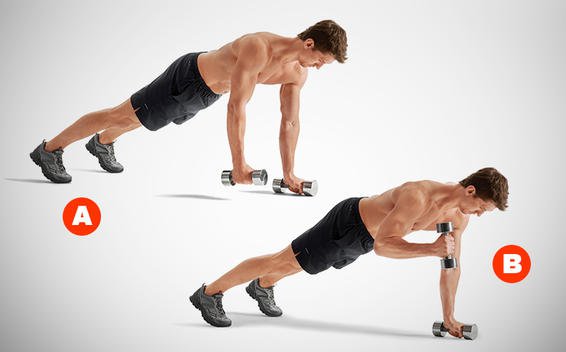
Are 10kg Dumbbells Enough to Build Muscle?
One of the frequently asked questions among gym newcomers or those reinitiating resistance training is, ‘are 10kg dumbbells enough to build muscle?’ With abundant misinformation circulating online, we aim to provide a definitive answer: yes, 10kg dumbbells are indeed adequate for building muscle!
In this comprehensive workout guide, we explore the effectiveness of 10kg dumbbells for muscle building and suggest exercises for an intense workout session.
Are 10kg dumbbells sufficient for building muscles?
The key to muscle growth lies in progressively overloading your workouts and maintaining a caloric surplus. For beginners or individuals returning to the gym after a hiatus, 10kg dumbbells (equivalent to 22lbs) can produce noticeable changes in appearance initially. However, as you progress, increasing the weight becomes imperative to sustain muscle gains.
Certain muscle groups can experience rapid growth with just 10kg dumbbells or kettlebells, provided you follow an appropriate training regimen (a certified Personal Trainer can assist with crafting a workout routine and more). Consider abdominal muscles as an example…
If you’ve reached a plateau with traditional sit-ups, incorporating a 10kg dumbbell held across your chest can significantly increase resistance, leading to stronger and more toned core muscles over time.
Time under tension
A critical aspect of lean mass development is maintaining muscle tension for an extended duration—especially pertinent when working with lighter weights. When heavier weights are unavailable, simply slowing down repetitions can stimulate muscle growth compared to performing quick, high-repetition sets.
Chest exercises with 10kg dumbbells
Effectively developing your chest with 10kg dumbbells requires specific exercises and a structured routine.
1. Dumbbell Press-Up:
– Position two 10kg dumbbells facing upwards and place your hands and arms on the weights.
– Perform 8 – 10 reps with a focus on form and maintaining chest tension.
2. Dumbbell Chest Fly:
– Lie flat on a bench and hold a dumbbell in each arm, extending them out to the sides.
– Slowly bring the weights together in an upward motion to work the chest effectively.
Back exercises with 10kg dumbbells
Targeting your back muscles with 10kg dumbbells can yield excellent results under proper guidance.
1. Single-Arm Dumbbell Row:
– Place two 10kg dumbbells on the ground and lift the handle of each weight, pulling it up to your chest.
– Perform 8 – 10 reps while focusing on maintaining back tension and proper form.
Arm exercises with 10kg dumbbells
Building biceps and triceps with 10kg dumbbells is achievable through time under tension.
1. Tricep Extension:
– Sit upright on a bench, holding a 10kg dumbbell with both hands.
– Extend the weight vertically above your head and lower it behind your head until your forearms touch your biceps, then press back up.
2. Bicep Curl:
– Hold a 10kg dumbbell in each hand, arms extended by your sides.
– Curl the weights up towards your shoulders, squeezing at the top before lowering them back down.
Shoulder exercises with 10kg dumbbells
Similar to arm exercises, shoulder muscles can be effectively targeted with lighter weights due to their relative size.
1. Dumbbell Shoulder Press:
– Sit on a bench holding a 10kg dumbbell in each hand at shoulder height.
– Press the weights upward until fully extended, then lower them back down in a controlled motion.
2. Lateral Raises:
– Stand with feet shoulder-width apart and bend your elbows slightly.
– Raise the dumbbells out to your sides until they reach shoulder height, then lower them back down.
By incorporating these exercises into your routine, you can effectively utilize 10kg dumbbells to achieve your muscle-building goals.
How Much Weight for Bicep Curls?
Selecting the appropriate weight for bicep curls is essential for effective muscle development and avoiding injury. The ideal weight varies from person to person based on factors like strength, experience, and fitness goals.
Average Bicep Curl Weight for Men and Women:
There’s no one-size-fits-all answer, but here’s a general range for beginners:
Men: For bicep curls with a barbell or dumbbell, starting with weights around 8 to 12 kg can be a good beginning point.
Women: If you’re a beginner, starting with weights around 4 to 6 kg is a reasonable starting point.
How Much Weight for Dumbbell Bicep Curls?
When using dumbbells, start with a weight that you can comfortably perform 8 to 12 reps with proper form. If you can easily do more reps, increase the weight slightly. If you can’t complete at least 8 reps, decrease the weight. The right weight should challenge you without sacrificing form.
How Much Should You Curl with One Arm?
When performing single-arm curls, the weight you use will likely be slightly less than what you use for both arms combined. This is because each arm has to work independently. A common guideline is to start with about 70-80% of the weight you’d use for both arms.
Tips to Do Bicep Curls for Best Results:
Start Light:
If you’re new to bicep curls, begin with a weight that allows you to perform around 8 to 12 reps with good form.
Progress Gradually:
As you get stronger, gradually increase the weight to keep challenging your muscles.
Proper Form:
Maintain proper form throughout the movement to prevent injury.
Individual Variations:
Everyone’s strength and fitness level differ, so listen to your body and adjust accordingly.
Consult a Pro:
If you’re unsure, a fitness professional can help you find the right weight and tailor your workout to your goals.
Does Arm Blaster Help in Lifting More Weight?
Maximizing Bicep Workouts with an Arm Blaster
Unlocking the Potential
Utilizing an arm blaster in your bicep workouts can revolutionize your training regimen. Here’s how:
1. Bicep Muscle Isolation
By stabilizing your upper arms, the arm blaster isolates your biceps, preventing other muscles from interfering. This isolation enables you to lift heavier weights while maintaining impeccable form.
2. Maintaining Proper Form
With the arm blaster, your form remains impeccable throughout each repetition. Optimal form ensures efficient muscle engagement and reduces the risk of strain or injury.
3. Embracing Progressive Overload
Gradually increasing the weight lifted is key to continual progress. Begin with a weight that challenges you within the 8-12 rep range, steadily elevating the load as your strength improves while ensuring form remains flawless.
4. Mastering the Basics
Never underestimate the power of fundamental techniques. Focus on contracting your biceps at the peak of each curl and controlling the descent for maximum muscle activation.
5. Prioritizing Rest and Recovery
Heavy lifting necessitates adequate recovery time. Allow your muscles ample rest between workouts and consider optimizing your nutrition to support muscle growth and repair.
Bicep Curls – Addressing Common Queries
What Weight Should I Use for Bicep Curls?
The ideal weight varies based on individual fitness levels and goals. Aim for a weight that challenges you within the 8-12 rep range while maintaining proper form.
Is a 10 kg Bicep Curl Effective?
A 10 kg bicep curl can be effective, particularly for beginners or those focusing on higher repetitions. Ensure the weight pushes your limits without sacrificing form.
Is a 7.5 kg Dumbbell Sufficient for Bicep Workouts?
Starting with a 7.5 kg dumbbell is reasonable, especially for novices. Gradually increase the weight as you progress for continued challenge and growth.
Is a 20 kg Bicep Curl Recommended?
A 20 kg bicep curl is considered heavy and suitable for individuals with advanced strength. However, prioritize maintaining impeccable form to avoid injury, ensuring you can complete 8-12 reps with confidence.



